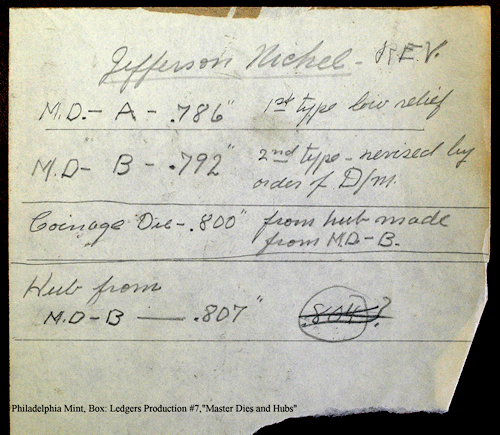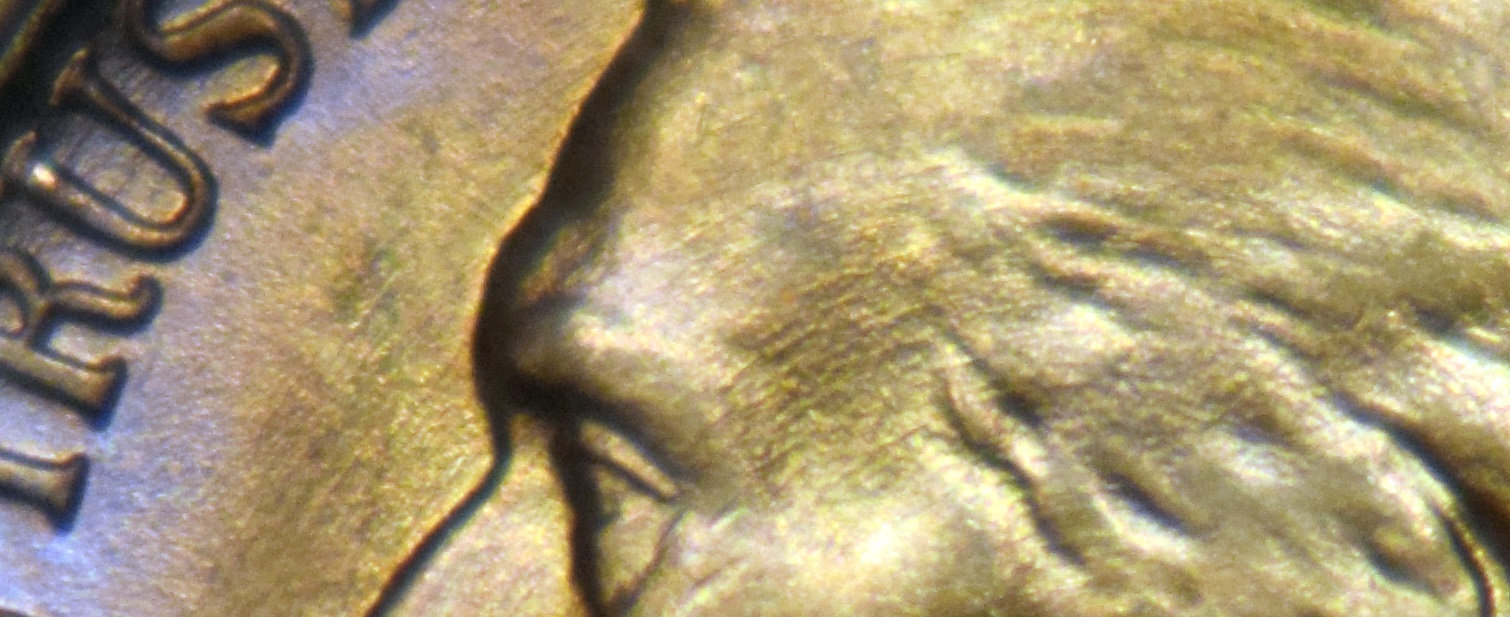1938 Jefferson nickel reverse changes
 RogerB
Posts: 8,852 ✭✭✭✭✭
RogerB
Posts: 8,852 ✭✭✭✭✭
Here's a little something to help/confuse Jefferson nickel fans. The comments refer to the reverse of 1938 coins - both those issued and the patterns. ![]()

1
Comments
Does this mean the relief was getting higher?
Measurements ranged from 0.006” to 0.008”.
D/m is the director of the Mint?
Well that is clear as mud.... Your day to stir the pot Roger???
Your day to stir the pot Roger???  Cheers, RickO
Cheers, RickO
Not at all. Understand that many of these archival documents simply come with no context. At some level it was just someone throwing papers in a box without trying to make sense of them all. They left that problem for people like Roger who come along later. In this case, a careful physical examination of the coins in question is required to demonstrate consistency (or not) with the archival record, such as at is. That's a lot of work for a single piece of paper. And there are literally millions of pages from the Mint stored in the archives. Roger is a smart guy, but even he can't thoroughly analyze every scrap of paper that comes out of there. Out of the goodness of his heart (he isn't being paid for this) he shares this information in the hopes that others might be encouraged to take up the torch and move the bar of numismatic research forward. [Rant mode off.]
@Coinosaurus .... I knew that... I was playing off Roger's comment in the OP about 'help/confuse'....It was humor, and I felt the emoji's made that clear. Cheers, RickO
Is this related to the wavy steps/straight steps, or?
"help/confuse" was included both as it relates to the smiley face, and to my lack of detailed knowledge of what Jefferson nickel specialists know about the 1938 coins --- That is: specialists might already understand the master die (i.e.: "M.D.") and other references, and I do not.
This little page is part of the only known notebook from the Engraving Department at the Philadelphia Mint. Here's the cover --
I have similar extracts for WL halves, Washington quarters (posted in Franklin Variety Specialist thread), Roosevelt dimes, Franklin halves, Lincoln cents, foreign coins and medals. All from the 1930s to late 40s. Little has been written because I don't know enough to understand and explain what the Engraver meant. When time and resources permit, I plan to go back and photograph the rest of things. John Mercanti has been very helpful, but all of this is from practices largely before his time at the Mint.
Are those measurements relief or diameter? The diameter of a nickel, at 21.21 mm, is 0.835 inches. Could this be the diameter inside the rim or something similar?
From the following website; http://www.felixschlag.com/nickel.html
"The background or field should have a slight radius, that is, the background must curve slightly from the center to meet the edge of the coin or border. A model with an absolutely flat background would be practically impossible to coin. The extreme depth of relief from the border to the deepest part should not exceed 5/32 of an inch and the highest part of the design should be kept slightly under the level of the border."
I think the measurement would vary.... but likely dead center.
Here's another guess.........this measurement could be adjusted with the time the planchets remained in the upsetting machines?
Leo
Also from this website;
January 2015: A trip to the National Archives, College Park, Maryland yielded more than 470 pages of material pertaining to the Jefferson nickel contest and the coin in general. The documents were part of Record Group 104, Records of the U. S. Mint. The material has been digitized and organized into a single PDF document that is available upon request. A summary document is available for viewing to give an idea of the scope of the content.
The more qualities observed in a coin, the more desirable that coin becomes!
My Jefferson Nickel Collection
leothelyon - The quoted section refers to a plaster model not a die. Models were approximately 4-inches in diameter.
RE: "0.807" and similar. These refer to the design diameter. The difference between that and the coin diameter equals the rim width. Notice that the engraver was increasing both relief and diameter of the design (not the coin). Most measurements are in inches, but grams ('grammes') and millimeters occasionally are used.
"Competitors will submit unsigned plaster models not exceeding eight and a half inches in diameter.'
But they had to make adjustments to the model before cutting the hub, right? But I guess the adjustments were necessary to get a complete consistent strike.

The following coin shows circular raised lines made from a lathe bit. So the heights and widths had to be made to the model before returning the cutting bit to the hub.
But I'm still trying to picture how both directions could move from a single action and your point other than a remarkable technical achievement back in the day.
The more qualities observed in a coin, the more desirable that coin becomes!
My Jefferson Nickel Collection
Typically, a model that was too large (over 5x the diameter of the coin) was first reduced in scale. This was called a reduction. This, usually made of brass, was then reduced to the correct coin size. By 1938, an electrotype (aka "galvano") was made of the model and the it could be reduced directly to the coin size.
Adjustments to design diameter could be made at any point; however, during the master die hardening and pressing process, there was a tendency for the recipient steel to expand slightly. In the opening excerpt, it seem the engravers were allowing this to occur.